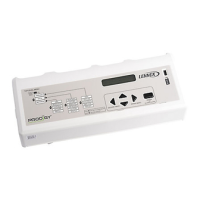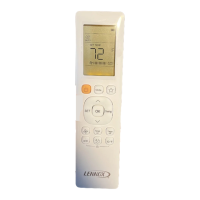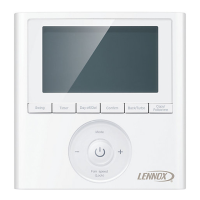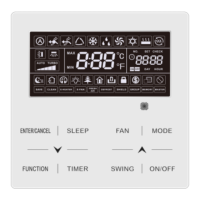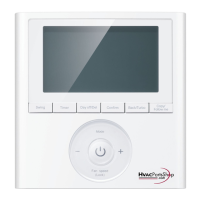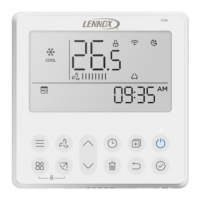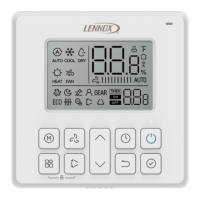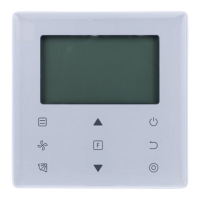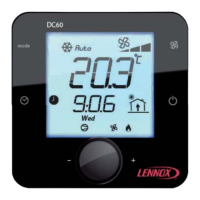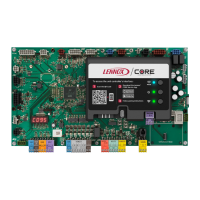65
15. Third-Party Zoning
The M3 unit controller is only compatible with bypass damper actuators specified in the Product Specification bulletin.
Figure 19 is a Constant Air Volume with bypass damper unit wiring summary.
In addition to providing bypass damper control (Constant Air Volume units), the M3 unit controller provides discharge air
control for cooling and/or heating. More options are available which control single‐stage or two‐stage power exhaust
fans.
Only four digital inputs are required to control the rooftop unit for third-party zoning applications:
G (blower enable), thermostat demand
OCP occupied mode
Y1 (enables discharge cooling)
W1 (enables discharge heating)
Heating Demand
Cooling Demand
Occupied Demand
Ventilation Demand
RTU w/M3
Third Party Zoning
Control System
24VAC Digital Signals
Common
G
OCP
Y1
W1
C
Bypass Damper
2-10V, 2V Full Open
Supply Static Pr.
Sensor (A30)
Figure 19. Field Wiring Summary for Constant Air Volume Unit with Bypass Damper
15.1. Air Delivery Operation
When a G signal is energized, the M3 unit controller will control a bypass damper that was configured during purchased
and field-installed to hold a constant supply duct static pressure. The M3 unit controller uses a pressure sensor input and
a PID control loop to maintain duct static pressure. For increased flexibility, the M3 unit controller has separate adjustable
static pressure set points for ventilation, cooling, heating and smoke alarms. Refer to sections 13.2. through 13.5. for
further details concerning supply air operation.
15.2. Occupied /Unoccupied Operation
When the thermostat demand occupied mode signal is energized, the M3 unit controller will adjust the fresh air damper to
a fixed minimum position or a modulating position (based on a carbon dioxide sensor input). Also during morning
warm-up/cool-down the M3 unit controller will keep the damper closed based on the settings selected.
15.3. Cooling Operation
When a Y1 signal is energized the M3 unit controller will control up to four stages of cooling (depending on rooftop unit
size) to automatically maintain a constant discharge air cooling temperature. The M3 unit controller also has advanced
discharge air cooling reset options based on return air temperature and/or outside air temperature. Refer to section 14.1.
for further details.
15.3.1. Discharge Air Control Cooling Outdoor Air Reset
The outside air reset saves energy by gradually increasing the discharge air set point as the outside air temperature
decreases. Refer to section 14.1.1. for further details.
15.3.2. Discharge Air Control Cooling Return Air Reset
The return air reset reduces the possibility of over-cooling by gradually increasing the discharge air set point as the return
air temperature decreases. Over-cooling may occur if the zoning system is misapplied, has an abnormal condition, or a
dominant zone. Refer to section 14.1.2. for further details.
15.4. Heating Operation
When a W1 signal is energized, the M3 unit controller will control up to 4-stages of heating (depending on rooftop unit
size) to automatically maintain a constant discharge air heating temperature. The M3 unit controller also has advanced
discharge air heating reset options based on return air temperature and/or outside air temperature. Refer to section 14.2.
for further details.
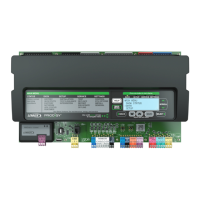
